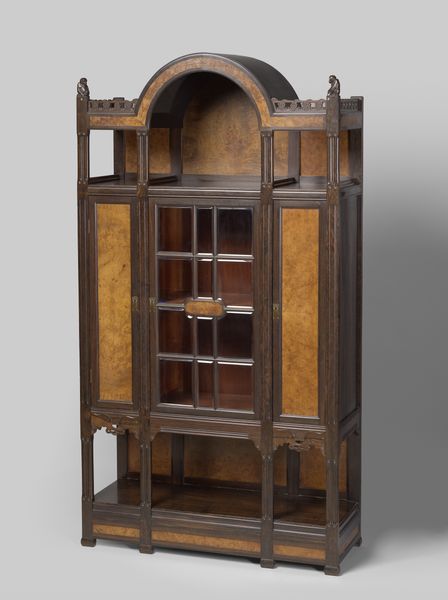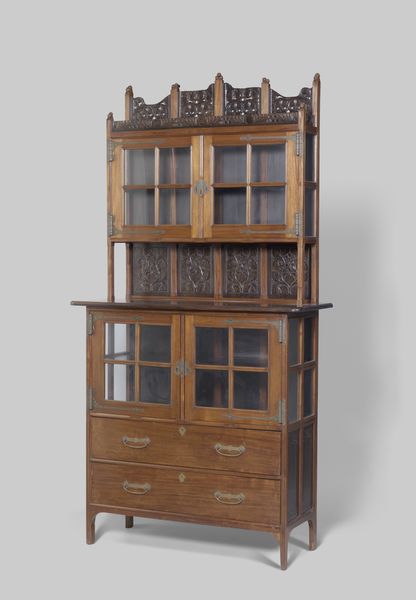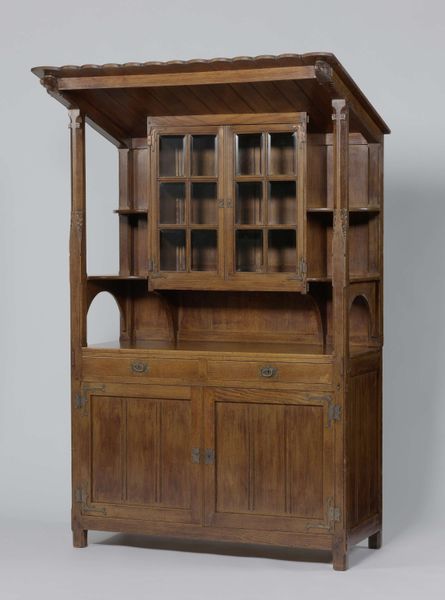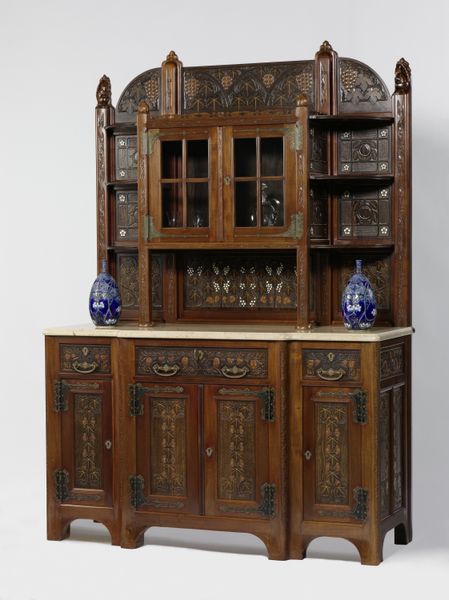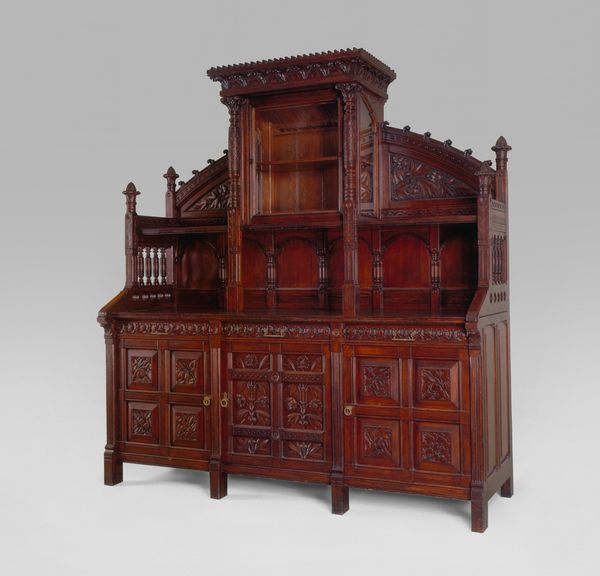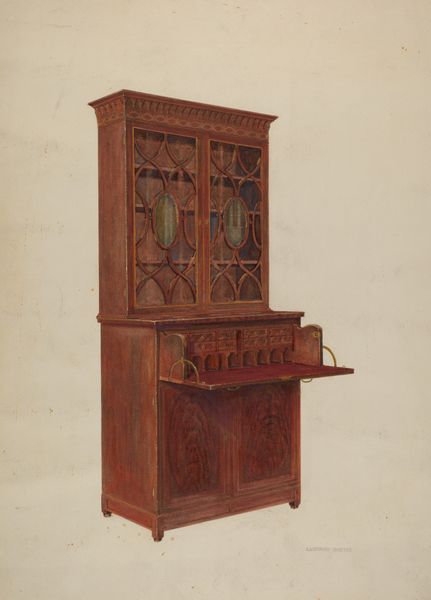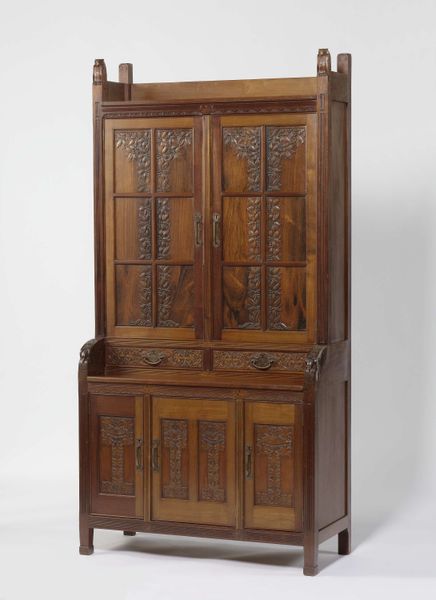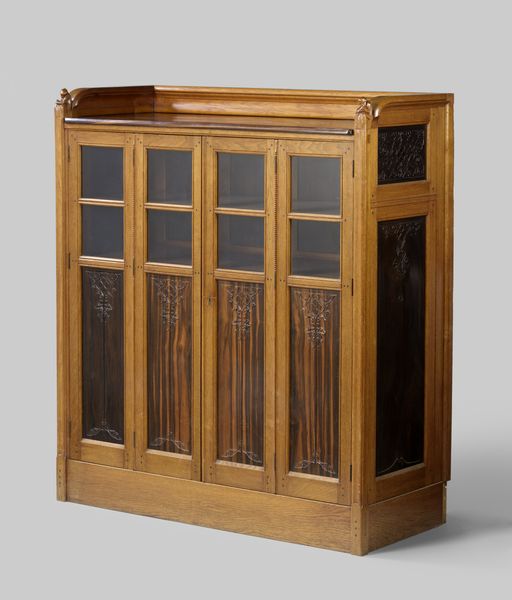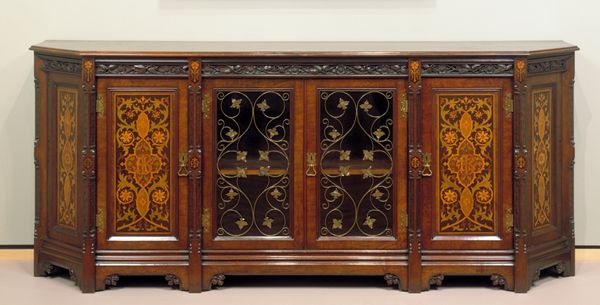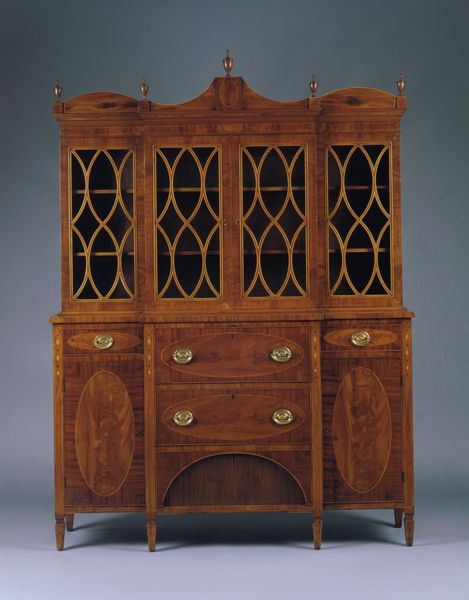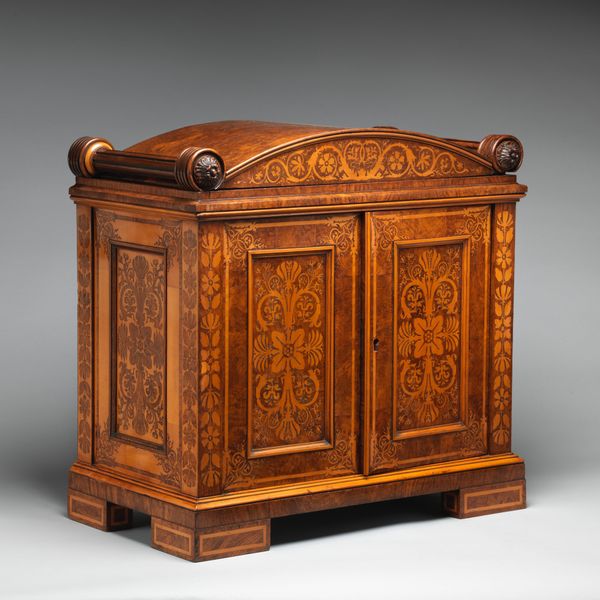
Wand met ingebouwde buffetkast met aangrenzende betimmering met twee deuren uit de eetkamer van het huis Het Uiltje te Loenen-Nieuwersluis c. 1916
0:00
0:00
wood
#
wood texture
#
arts-&-crafts-movement
#
furniture
#
wood
#
decorative-art
Dimensions: height 197 cm, width 249 cm, depth 8 cm, weight 237.8 kg
Copyright: Rijks Museum: Open Domain
Editor: Here we have a built-in buffet with adjoining paneling, carved from wood, by Theo Nieuwenhuis, circa 1916. I’m struck by its weightiness. It’s so imposing! What historical context informs this impressive piece? Curator: Well, consider that this buffet comes from "Het Uiltje," a home in Loenen-Nieuwersluis. Nieuwenhuis wasn't just designing a piece of furniture; he was crafting an environment, an ideal of domestic life. We need to examine the Arts and Crafts movement in relation to the politics of industrialization at the time. How do you see the design responding to, or perhaps rejecting, mass production? Editor: I see that, with the carved detailing! It's too detailed and complex for easy mass production. And the symmetry of the work seems planned for a specific location in the home. Curator: Precisely! The Arts and Crafts movement was, in many ways, a socialist endeavor. Think of William Morris. Artists wanted to elevate the status of craft, placing value on unique work by individual makers as an antidote to factory life and poor living conditions. What message does that send about the role of domestic space and material possessions within that socio-political climate? Editor: So this buffet becomes more than just a functional object; it represents certain values. Does its display within a museum setting shift that meaning in any way? Curator: Absolutely. By placing it in the museum, we are inherently recontextualizing it, transforming it from a component of lived space to an artifact on display. Consider how that change affects the perception and valuation of the work. Does it highlight its artistic merit, or does it diminish its intended purpose? Editor: That's such a good point. I hadn't considered how much the display affects our reading of the piece itself. Thanks! Curator: The role of a museum is a very powerful place and can dictate what gets showcased and valued for generations to come. Food for thought!
Comments
No comments
Be the first to comment and join the conversation on the ultimate creative platform.

